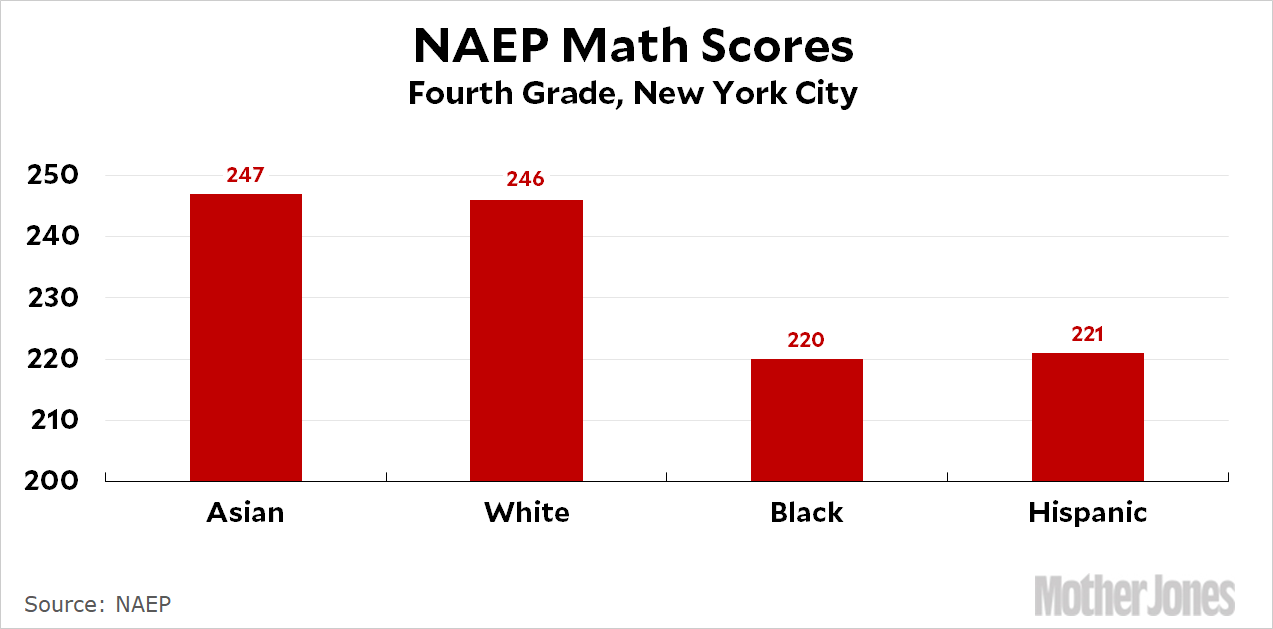Here’s a bit of statistical reckoning for you to ponder today. New York City mayor Bill DeBlasio wants to get more black kids into his city’s specialized high schools, which admit the top 5 percent of all students:
The problem is clear. Eight of our most renowned high schools — including Stuyvesant High School, Bronx High School of Science and Brooklyn Technical High School — rely on a single, high-stakes exam. The Specialized High School Admissions Test isn’t just flawed – it’s a roadblock to justice, progress and academic excellence….Right now, we are living with monumental injustice. The prestigious high schools make 5,000 admissions offers to incoming ninth-graders. Yet, this year just 172 black students and 298 Latino students received offers. This happened in a city where two out of every three eighth-graders in our public schools are Latino or black.
Bob Somerby has been commenting on this for the past few days, and it got me curious: how many black students should we expect in these high schools in the first place? What if we ditch the results of the high-stakes SHSAT and instead take a look at the results of the low-stakes NAEP test? Here’s the mathematical skinny:
- For all NYC eighth graders, the average math score on the NAEP is 275 with a standard deviation of 41.
- The cutoff for the top 5 percent is about 1.6 SDs above the mean, which is a score of 340.
- For black eighth graders, the average math score is 256 with a standard deviation of 33.
- A score of 340 is therefore 2.5 SDs above the mean for black kids.
- New York City has 75,000 eighth graders, of which about 20,000 are black.
- 2.5 SDs above the mean is 0.6 percent of the total population. That’s about 120 black students.
If anything, New York City is currently admitting more black eighth graders than you’d expect. DeBlasio wants to increase this number by giving preferences to “economically disadvantaged students who just missed the test cut-off,” which will work but won’t significantly increase the numbers unless “just missed” is defined pretty broadly. Even if your goal were a fairly modest increase to 300 black students admitted each year, you’d need to let in kids with a math score of about 325, compared to 340 for everyone else.
That may well be both doable and fair, though it’s likely that these kids are going to need extra help to catch up with their famously competitive peers at New York’s specialized high schools. But if you want to do even more, eighth grade just isn’t going to cut it. It’s too late. The black-white test gap needs to close in primary school so you have a bigger pool of qualified kids to choose from once they get to eighth grade. The problem is that in New York City schools, there’s already a nearly three-grade-level gap between black and white kids by fourth grade:

Until we figure out how to fix this, there’s barely any chance of making any real progress at the high school level.













